Celebrating Research Accomplishments in Challenging Times
Here are some things that don't shut down when the government closes: Heart disease. Cancer. Diabetes. Alzheimer's. Schizophrenia. The list goes on.
Fortunately, Congress came to its senses in the 11th hour and ended the 16-day federal government shutdown that took $24 billion out of the U.S. economy, according to Standard and Poor's, and reduced projected fourth-quarter GDP growth from 3 percent to 2.4 percent.
Of all of the unnecessary hardships imposed by the federal government shutdown, its impact on biomedical research was particularly harsh, as this is a field that had already sustained devastating budget cuts. Even before last year's Budget Control Act (sequestration), the federal research and development budget had declined 10 percent in constant dollars since 2010. The onset of sequestration forced the NIH to slash its budget by an additional $1.7 billion. If we go forward indefinitely under the Continuing Resolution funding passed by Congress, we will still be living under sequestration; 2013 research funding levels ― deemed the darkest ever by NIH Director Francis Collins ― will be cut even more.
Thus, it has been a difficult year for research at academic health centers. So it is an amazing tribute to the research community at UF Health that we are bucking this trend with an uptick in federal research funding this year. These grants come in all shapes and sizes and reflect the extraordinary efforts of faculty and staff in all of our colleges, centers and institutes, as well as hospital staff who play important roles in much of this work.
It is particularly uplifting and totally awesome to know that, in this almost impossibly competitive environment for new research grants, many of our faculty were successful in obtaining large research grants from NIH just in the past several months. In fact, our researchers received seven large grants since May that will bring in more than $7 million in the first year alone. The research ranges from tackling obesity and diabetes to personalized medicine, gene therapy, metabolomics and exploring new therapies for Alzheimer's disease. I am delighted to share the stories behind these research projects.
Seeking a cure for Type 1 diabetes
 Immune function and the progression to Type 1 diabetes
Immune function and the progression to Type 1 diabetes
P01 AI042288-15A1 PI: Mark Atkinson, Department of Pathology, Immunology & Laboratory Medicine Co-Is: Todd Brusko, Martha Campbell-Thompson, Michael Clare-Salzler, Clayton Matthews, Desmond Schatz, S. Brian Wilson Award date: 05/10/13 Year 1 budget: $1,113,383 5-year budget: $6,260,785
About 16 years ago, a group of University of Florida researchers that included Mark Atkinson, Ph.D., Michael Clare-Salzler, M.D., and Desmond Schatz, M.D., applied for a grant to try to understand how Type 1 diabetes develops and how to prevent or reverse the disease. They each were examining different parts of the immune system to investigate what goes wrong in the steps leading up to this chronic and devastating disease. During that time, UF has become a leader in clinical trials seeking to prevent or reverse the disease. Based on their success, the researchers have the opportunity to take this research further.
These Diabetes Center of Excellence investigators have won renewed Program Project funding from the NIH for 2013 to 2018 (years 16-20 for this award), and the research group has expanded beyond those investigators to include researchers Martha Campbell-Thompson, Ph.D., Todd Brusko, Ph.D., Clayton Matthews, Ph.D., and Brian Wilson, M.D., Ph.D.
Type 1 diabetes is a disorder that arises following the autoimmune destruction of insulin-producing pancreatic beta cells. Previous studies, including many emanating from UF Health, have demonstrated that individuals with this disease display a number of immunological abnormalities. The contribution of specific genes to this process, as well as an understanding of interactions between specialized cells and molecules of the innate and adaptive immune systems that lead to Type 1 diabetes, remains unclear, however. The current grant will collectively test their overall hypothesis that defects in the genetics of these immune systems are key to causing the autoimmune destruction of pancreatic cells that result in Type 1 diabetes. This current project will share data, use innovative technologies, and assess samples from extremely valuable human subjects with, or at various levels of, risk for this disease.
We hope that, by understanding how the immune system is abnormal in Type 1 diabetes, we will find ways to cure it, Atkinson said.
Studying the processes that sustain life
 Southeast Resource Center for Integrated Metabolomics (SECIM)
Southeast Resource Center for Integrated Metabolomics (SECIM)
NIH U24 DK097209-01A1 PI(s): Arthur Edison, Department of Biochemistry and Richard Yost, Department of Chemistry Co-Is: Michael Conlon, Stephen Gardell, Timothy Garrett, Lauren McIntyre, Steven Smith, Glenn Walter Award date: 09/10/13 Year 1 budget: $2,091,492 5-year budget: $9,999,525
UF Health researchers have once again placed us at the forefront of discovery by creating a center for metabolomics. An emerging field, metabolomics is the study of small molecules called metabolites, which result from the metabolic processes that fuel and sustain life. It offers a new lens through which scientists can assess and understand the state of nutrition, infection, health or disease in an organism, whether human, animal, plant or microbe.
With the new grant, UF's Southeast Center for Integrated Metabolomics will offer services to basic and clinical scientists across the country, with outreach targeted to those in the Southeast. The center will integrate existing and emerging technologies in new ways to improve the quality and interpretation of metabolomics data.
Part of the UF Clinical and Translational Science Institute, or CTSI, the center brings together expertise and resources from multiple colleges and units at UF as well as Sanford-Burnham Medical Research Institute, the National High Magnetic Field Laboratory at Florida State University, Ohio State University, the University of Georgia, Imperial College of London, the University of Geneva and industry partners IROA Technologies and Thermo Fisher Scientific.
Ripe for the kinds of discoveries that have been arising during the last decade from its sister fields of genomics and proteomics, metabolomics draws from many scientific disciplines, including chemistry, physiology, statistics, genetics, computer science and systems design.
Metabolites keep everything going. They convert food into energy. They allow cells, tissues and organs to communicate. They're the starting materials for DNA, proteins and cell membranes, said Arthur S. Edison, Ph.D., co-principal investigator and director of the Southeast Center for Integrated Metabolomics and a professor of biochemistry and molecular biology in the UF College of Medicine. By measuring metabolites, we can get a unique window into disease.
Using gene therapy for clear sight
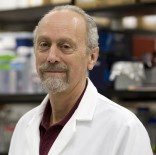 RAAV-CNGB3 Gene Therapy for Achromatopsia: Translational Research Studies
RAAV-CNGB3 Gene Therapy for Achromatopsia: Translational Research Studies
NIH R24 EY022023-01 PI: William Hauswirth, Department of Ophthalmology Non-UF Co-Is: Joseph Carroll, Jeffrey Chulay, Gerald Fishman, Byron Lam, Martha Neuringer, Richard Weleber, Trevor McGill, John Stout, Ye Guo-Jie, David Knop Award date: 05/28/13 Year 1 budget: $1,646,469 5-year budget: $9,857,709
With this grant, William Hauswirth, Ph.D., will explore ways to use gene therapy to address the symptoms of achromatopsia, a vision disorder that leaves people with no color perception, severely reduced vision and a high sensitivity to bright light such as daylight. The known genetic forms of this disorder cause malfunction of the retina, the portion of the eye responsible for making the picture. Cone cells in the retina, which are responsible for normal high acuity and color vision, have no response to light in people with achromatopsia. The main genetic causes are mutations in a specific type of channel found in the cone cells called the cyclic nucleotide-gated (CNG) ion channel.
In this project, Hauswirth and his co-investigators will work towards enabling the translation of an already successful preclinical gene therapy for a specific form of achromatopsia into a clinical trial. In the course of this work, they will optimize a first in class gene delivery reagent, a recombinant adeno-associated virus, to address the unmet vision needs of patients with this type of achromatopsia.
Hauswirth is a pioneer in gene therapy and viewed as the founding father of what has become the most widely used retinal gene therapy delivery system. He has been the principal scientist responsible for delivery and testing of potentially therapeutic genes for many human diseases affecting the retina. Besides achromatopsia, these have included multiple genetic forms of retinitis pigmentosa, Leber congenital amaurosis, blue cone monochromacy, Ushers disease, macular degeneration, diabetic retinopathy, glaucoma and optic neuropathies, using natural and transgenic animal models of each human disease.
Among widespread recognition for his work, notable awards have included: 2005 Scientist of the Year for the Hope for Vision Foundation; Florida Scientist of the Year in 2009; Time Magazine's third most important science discovery for 2009; citation in A Decade of Breakthroughs by Science Magazine; and most recently, the 2013 Llura Liggett Gund Award for Lifetime Achievement from the Foundation Fighting Blindness.
Everything suggests that we are only at the beginning of bringing more gene-based treatments to deserving low vision patients, Hauswirth said. I hope to be a part of many of them.
Expanding personalized medicine to more people
 Genomic Medicine Implementation: The Personalized Medicine Program
Genomic Medicine Implementation: The Personalized Medicine Program
NIH U01 HG007269 PI: Julie A. Johnson, Department of Pharmacotherapy and Translational Research Co-Is: Dave R. Nelson, Michael J. Clare-Salzler, Reginald Frye, Rhonda Cooper-Dehoff, Taimour Langaee, Yan Gong Award date: 6/16/2013 Funded Year 1 budget: $749,835 Total budget: $3,710,361
In 2012, UF Health incorporated a blood test for cardiology patients to provide genetic information indicating an individuals likely response to clopidogrel, a commonly prescribed anti-clotting drug. Of the more than 1,000 patients tested, about 28 percent have a genetic variation for which a different medication is recommended. Those patients now have results stored in the UF Health electronic medical record system, which will alert doctors to the recommended medication if a prescription for clopidogrel were written in the future.
Julie A. Johnson, Pharm.D., dean of the College of Pharmacy, and her colleagues just received a multi-year, multi-million dollar grant that will allow them to expand this research here and collaborate with researchers at Duke University and Mount Sinai with a coordinating center at the University of Pennsylvania.
Johnson's multidisciplinary team will expand the UF Health Personalized Medicine Program, a part of the UF Clinical and Translational Science Institute. The team will build on the program's infrastructure to introduce routine genetic testing at UF Health for additional medications for which strong evidence links specific genetic variations to how the body responds to a drug. The program will next focus on medications for pediatric cancer patients, and adult and pediatric gastroenterology patients.
This year, the UF Health program will help Orlando Health prepare two of its cardiology practices to begin standard genetic testing for clopidogrel in 2014. The program will also work with the Florida State University College of Medicine to introduce similar genetic testing within its statewide network of physician practices.
The program also will develop training opportunities to prepare health care professionals, health sciences students and patients for a future that includes genomic medicine.
This funding will be the catalyst that propels and expands our work within and beyond our academic health center to help the clinical world incorporate genetic information as a routine part of patient care, said Johnson, a distinguished professor of pharmacy and medicine.
A new approach to seeking therapies for Alzheimer's disease
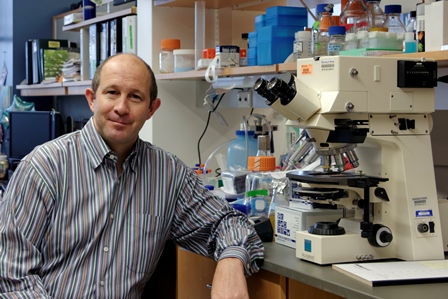 A system approach to targeting innate immunity in AD
A system approach to targeting innate immunity in AD
NIH U01 AG046139-01 UF PI: Todd Golde, Department of Neuroscience Non-UF PI(s): Nilufer Ertekin-Taner, Steven Younkin, Nathan Price UF Co-Is: Jada Lewis, Christopher Janus, Yona Levites, Paramita Chakrabarty Non-UF Co-Is: Dennis Dickson, Leroy Hood Award date: 09/17/13 Year 1 budget: $1,602,041 5-year total project budget: $7,877,538
As many as 5.1 million Americans have Alzheimer's disease, and the numbers are increasing as the Baby Boomer population ages. Todd Golde, M.D., Ph.D., a professor of neuroscience, and his colleagues at UF, at The Mayo Clinic Florida and at the Institute for Systems Biology in Seattle are working to speed up the process of finding therapies for this disease.
His team will focus on how genetic alterations to the innate immune system ― the cells and mechanisms the body uses to fight potential microscopic invaders ― may be implicated in Alzheimer’s disease. Once they have identified these genetic alterations based on the data they generate, they can manipulate these pathways in mouse models with parallel pathologies to see how changes to the innate immune system might change the disease process. The big data approach will allow the researchers to more quickly target areas of potential interest.
There is a huge unmet need with Alzheimer’s disease, said Golde, director of the UF Center for Translational Research in Neurodegenerative Medicine. The economic costs for Alzheimers disease are now higher than those of heart disease and cancer, and as there are no therapies that modify the course of the disease, this is a devastating disorder for both patients who suffer from it and their families. With this grant, we hope to accelerate the discovery of possible disease-modifying therapies.
Golde is a professor of neuroscience and is also a member of the Evelyn F. and William L. McKnight Brain Institute of the University of Florida.
Helping tame obesity in rural areas
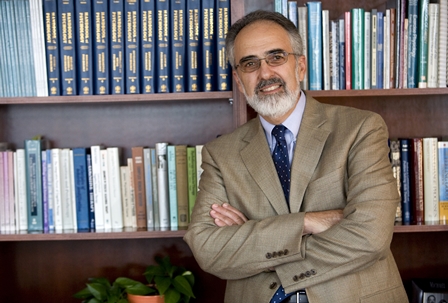 Rural Lifestyle Eating and Activity Program (Rural LEAP)
Rural Lifestyle Eating and Activity Program (Rural LEAP)
NIH R18 HL112720 PI: Michael G. Perri, Department of Clinical and Health Psychology Co-Is: Marian Limacher, Daniel Martin, David Janicke, Kristina von Castel-Roberts, Linda Bobroff Award date: 08/15/13 Year 1 budget: $746,408 Total budget: $3,724,808
As obesity rates continue to rise, our researchers examine ways to address the issue for all populations. Principal investigator Michael G. Perri, Ph.D., dean of the UF College of Public Health and Health Professions, and his colleagues have received funding to test the effectiveness of long-term weight management programs geared to people living in rural areas.
The occurrence of obesity in rural areas of the United States is significantly higher than in urban areas. In a 2012 study conducted by Perri and co-investigators at the University of Kansas Medical Center, the researchers found that almost 40 percent of rural adults were obese compared with just over 33 percent of urban adults. Several lifestyle differences may contribute to higher obesity rates in rural areas, including a traditional farm diet of high-fat, high-calorie foods, and increased mechanization of rural occupations such as farming and logging.
Perri has argued for the concept of obesity as a chronic condition requiring continuous care, and in three previous National Institutes of Health-funded trials, he and his team have evaluated treatment approaches for helping rural residents achieve long-term success in weight management following an intervention program.
In the new five-year study, researchers will compare three strategies for long-term weight management: individual phone counseling, group phone counseling and counseling via email or U.S. mail. If effective, group phone counseling could represent a more cost-effective treatment option that could reach larger numbers of patients.
Were trying to find ways to tackle the serious problem of obesity and sedentary lifestyle in rural areas, which typically have little access to programs that promote physical fitness and proper nutrition, said Perri. The driving impetus for this research is the need for a scalable, low-cost, yet highly effective treatment for weight management.
Finding the underlying causes of neuromuscular diseases
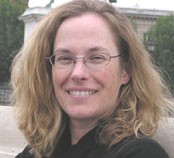 Myotonic Dystrophy: Molecular pathophysiology and CNS effects
Myotonic Dystrophy: Molecular pathophysiology and CNS effects
NIIH P01 NS058901-07A1 PI: Laura Ranum, Department of Molecular Genetics & Microbiology Co-PIs: Maurice Swanson, Tao Zu Non-UF Co-PIs: Brent Clark, John Day, Timothy Ebner Award date: 09/30/13 Year 1 budget: $1,261,372 5-year budget: $7,459,927

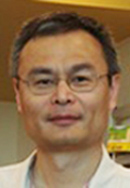
More than 40 neuromuscular disorders are caused by genetic mutation in which three or more letters of the genetic code are repeated too many times. These mutations can affect a patient's ability to walk, talk and think. In the Center for NeuroGenetics, Laura Ranum, Ph.D., and Maurice Swanson, Ph.D., and their colleagues study the molecular genetics of these disorders, and they have just been awarded a large grant to study two of these diseases: myotonic dystrophy Type 1 and Type 2. The focus of this research will be to understand how these diseases affect the brain. Their findings may shed light on other neurological diseases including amyotrophic lateral sclerosis and dementia.
Ranum studies how tiny errors in the genetic code of individuals with myotonic dystrophy make brain cells sick. These errors, called expansion mutations, are not found in the part of the DNA and RNA that are considered the operating manual for creating proteins. Instead, the mutations occur in regions that were previously thought to be of little importance. Ranum and Swanson have developed two major theories to explain the cause of myotonic dystrophy and a number of other neurological diseases.
In the case of myotonic dystrophy Type 1 and Type 2, the expansion mutations in RNA cause the RNAs to become toxic, because proteins clump together around the mutant RNA and no longer function properly in the cell. They also found that these repeated bits of genetic code can create unexpected mutant proteins. This newly identified mechanism has been shown to produce an unpredicted protein in Type 1 and in three other related diseases that are also caused by expansions in the DNA code. The team will test the effects of these rogue RNAs and proteins on specific features of the disease.
This grant will help Ranum and Swanson determine which mechanisms are responsible for the different symptoms of myotonic dystrophy, which include excessive sleepiness, loss of muscle function, cataracts, cardiac arrhythmias and diminished ability to plan daily activities of life. They will be working with colleagues at UF who see patients in the clinic. The team will be comparing findings in humans with mouse models to get at these basic issues. It is hoped that these studies will pave the way for better management of these terrible diseases and ultimately lead to a cure.
Learning from patients in the clinic, developing models and returning to the clinic for more information helps make our models a lot better and keeps our science on track, Ranum said. Because we are tackling the basic biology of a common type of mutation to get a handle on how the genetics work, these principles will likely apply to lots of different types of diseases.
Predicting and preventing Type 1 diabetes
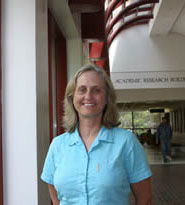 Pancreas volume in preclinical Type 1 diabetes
Pancreas volume in preclinical Type 1 diabetes
NIH DP3 DK101120-01 PI: Martha Campbell-Thompson, Department of Pathology, Immunology & Laboratory Medicine Award date: 09/18/13 Year 1 budget: $321,349 Total budget: $964,046
People at risk for Type 1 diabetes have smaller pancreas than their counterparts with no risk factors. This important finding, discovered by Martha Campbell-Thompson, Ph.D., and her team, has led to a large multi-center, multi-year project that will help researchers better understand the trajectory of the disease and may one day help lead to interventions to prevent it.
By using traditional, non-invasive tools such as MRI and ultrasound, this team of researchers, including Mark Atkinson, Ph.D., Desmond Schatz, M.D., and Michael Haller, M.D., will measure and estimate the pancreas volumes of four sets of individuals: People at risk of developing Type 1 diabetes due to the presence of serum autoantibodies (those with single and multiple autoantibodies); people who have recently been diagnosed with Type 1 diabetes; and people at little risk of developing the disease who are matched with the other groups based on age, gender, and BMI. They plan to recruit 100 patients per year for three years, from Florida and the southeast region.
This study will help researchers determine whether people who are at high risk of Type 1 diabetes start out with smaller pancreas volume or whether the beginning of the onset of the disease causes the pancreas volume to shrink. Either conclusion will provide essential insight into this disease.
We see this as a great potential aid for predicting who are at the highest risk for developing Type 1 diabetes, Campbell-Thompson said. We are hoping that this clinical screening process may become a new marker for a factor that leads to prevention strategies.
Forward Together,
David S. Guzick, M.D., Ph.D. Senior Vice President, Health Affairs President, UF Health
About the author
